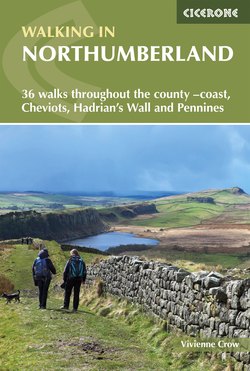Читать книгу Walking in Northumberland - Vivienne Crow - Страница 12
На сайте Литреса книга снята с продажи.
ОглавлениеWALK 1
Craster and Howick Hall
| Start/finish | Craster Quarry car park, Craster (NU 256 197) |
| Distance | 9.2km (5¾ miles) |
| Total ascent | 137m (450ft) |
| Grade | 1 |
| Walking time | 2½hr |
| Terrain | Field paths, road, track, low cliffs |
| Maps | OS Explorer 332; OS Landranger 81 |
| Transport | Buses 418 and X18 |
| Facilities | Craster Seafood Restaurant, Jolly Fisherman and Shoreline Café, all in Craster; public toilets and seasonal catering van in car park |
Starting from the attractive fishing village of Craster, this relaxing amble heads south to Howick Hall before taking to roads and rough tracks to reach the coast path and a gentle stroll back to the village. Even across the farmland at the start of the walk, the paths are generally easy to follow. Unwind and enjoy a few undemanding hours on this gorgeous section of the coast!
From the car park, take the footpath heading southwest towards Craster South Farm – along the edge of the Northumberland Wildlife Trust’s Arnold Memorial Nature Reserve. Having ignored one path to the right, you’ll quickly reach a kissing-gate providing access to more open ground. Follow the faint trail away from the woods (southwest). After a slight rise, stay parallel with a fence over to the left.
Reaching a road, cross diagonally right to head up a lane – signposted Howick Hall Gates. The lane ends in a turning circle at Craster South Farm. Just before this, bear left around the side of a farm gate. The muddy path soon joins a more solid track from the left. Continue with the field boundary on your left for almost 500m. Having crossed another rough track, go through a kissing-gate. Still following signs for Howick Hall, bear half-right, aiming for a farm gate at the base of the low crags of Hips Heugh. Once through the gate, skirt the base of the rocks for another 100m or so and then swing right across damp ground to go through a kissing-gate next to a ladder stile. A fingerpost shows the way through the crops ahead (south-southwest).
In the field corner, a pair of gates with a bridge between them provides access to the next field. Keep close to the trees on the right until you encounter a clear track rising through the woods. Follow this up to a broad, stony track near the walls of Howick Hall. This leads to a road, along which you turn left.
Howick Hall has been owned by the Grey family since 1319, although the house was rebuilt in 1928 after a massive fire. Among the many Greys who have lived there, the most distinguished is probably Charles, the second Earl Grey, after whom the bergamot-flavoured tea is named. As leader of the Whigs, he was Prime Minister from 1830 to 1834, during the time of the Great Reform Act 1932. The grounds – but not the house – are open to the public. They are particularly famed for their dense banks of snowdrops in late winter and their unusual range of trees, gathered from some of the farthest-flung corners of the world. Visit www.howickhallgardens.org for more information.
The coast south of Craster
After 850m the road bends sharp left. Take the track on the right here – signposted Alnmouth via coast path. At the entrance to Sea Houses Farm, keep straight on – along what is now a public byway. For the first time on this walk you’re able to look south along the coast, towards a series of small, golden beaches cradled by long fingers of rock.
A small, fenced enclosure to the left of the track was the site of an archaeological dig from 2000 to 2002, when a rare example of a Mesolithic hut was unearthed. Radiocarbon dating from hearths inside the home show it was built in about 7800BC, making it Northumberland’s oldest occupied site and among the oldest in the UK. Five Bronze Age burial cists were also found.
Just before the track drops to Howick Burn, a small gate on the right allows a 250m detour to the earthwork remains of an Iron Age settlement. After a metal gate, the mouth of Howick Burn is reached – a chance, finally, to enjoy a paddle in the chilly North Sea, or to search for fossils. Turn sharp left immediately after the gate – almost back on yourself – along the coast path as it hugs the top of low cliffs.
The lump of metal on the rocks below in a short while is part of the boiler of the French steam trawler Tadorne, which ran aground here in 1913. Five of the crew were killed in the accident, but another 25 were rescued by the Boulmer lifeboat.
The path goes through a couple of gates, passes to the seaward side of Sea Houses Farm and reaches a junction with a more solid path. Turn right along this. Views of Dunstanburgh Castle, further up the coast, come and go until you round Cullernose Point; now, the ruins take on a more surreal appearance, looming mirage-like above Craster.
The fishing village of Craster
Passing through a kissing-gate, keep to the seaward side of the first buildings on the southern edge of the village. The path passes to the right of a play area. After a set of steps, the coast path enters the beer garden behind the Jolly Fisherman pub. After a gate on the other side, turn left along a track between the buildings. Go left at the road and then take the lane rising on the right – Whin Hill. Swing right at the top and then follow the narrower path to the left. This leads back to the car park.
